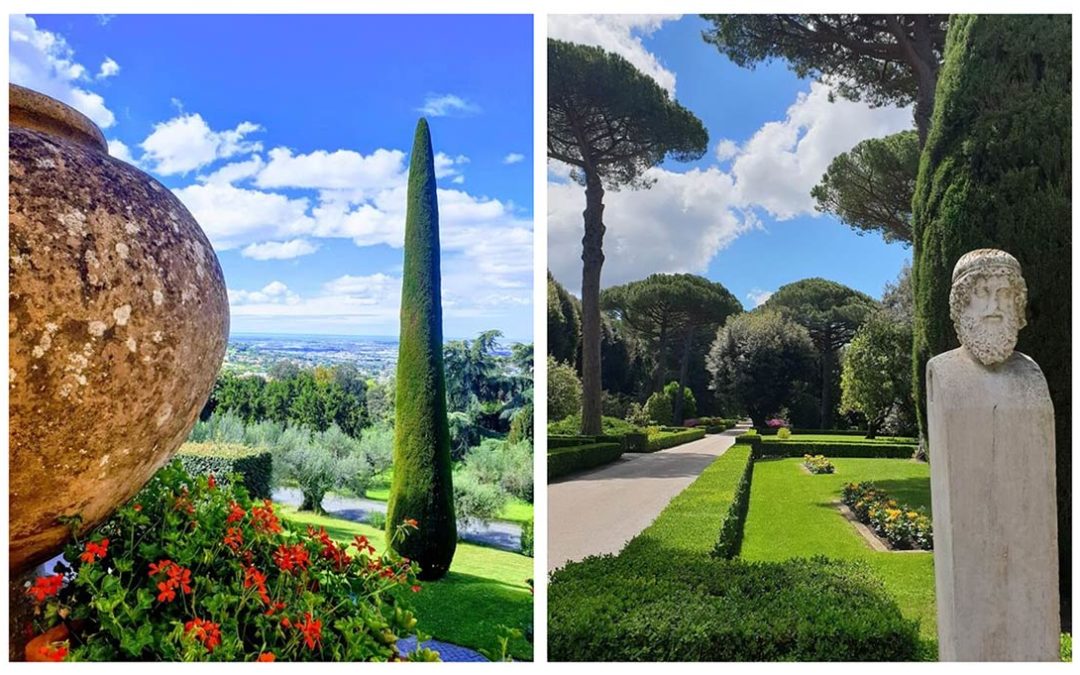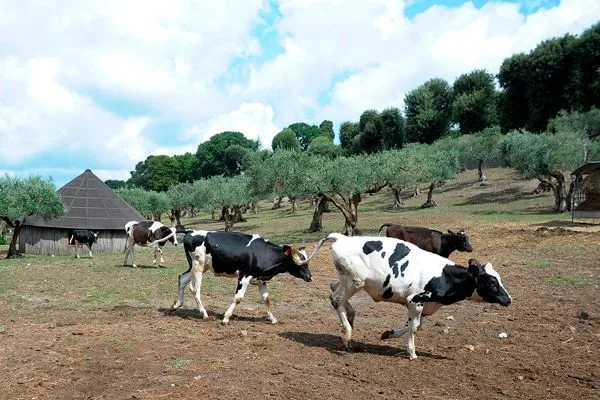In the words of Juan Vilar, «olive oil tourism is a collateral activity whose objective is to enhance the main activity by making the olive mill or olive farm more competitive, above all by reducing seasonality, establishing barriers to entry through singularization and building customer loyalty».
The Pontifical Villas of Castel Gandolfo cover 55 hectares (11 more than the entire Vatican City). The Barberini Gardens extend over 30 hectares, while the Papal Farm occupies the other 25. Let’s begin by exploring the Barberini Gardens.
Home to the Pope’s summer residence in the hills surrounding the shimmering waters of Lake Albano, Castel Gandolfo promises those who visit the perfect location.
Its lushly landscaped gardens, richly furnished papal palace and 25 hectares of farmland ripe with fresh produce provide all the divine inspiration imaginable away from the hustle and bustle of the capital.
On the 25 hectares of this family farm are cows, sheep, donkeys and chickens, which provide the fresh sheep’s cheese, mozzarella, milk and ricotta that are carefully incorporated into the papal estate’s recipes. There are also more than 1,000 olive trees, more than half of which date back to the 1200s. It also boasts its own olive oil mill, so the visit also includes the possibility of learning about the entire production process and tasting its extra virgin olive oil.
Since 2014, Pope Francis has opened the doors to an earthly paradise: Castel Gandolfo, where dairy products, meat and vegetables are produced for the Pope and his staff, and whose products are on sale to visitors and in various Vatican stores. This spectacular paradise can be enjoyed through guided tours of the surrounding gardens, fountains and archaeological treasures of the Roma era on the extensive estate 25 kilometers (15 miles) south of Rome.
Pope Francis made the decision not to use the hilltop retreat overlooking Lake Albano, preferring to stay in his suite at the Vatican hotel during the vacation. The last time the palace was used was when Pope Emeritus Benedict XVI moved in for a few months after his dramatic resignation in 2013.
Pope Pius XI had the farm built between 1929 and 1934, and it still operates according to the agricultural methods of the time: it is not an organic farm, but runs on natural fertilizers.
The Castel Gandolfo complex has three villas, including Villa Barberini, whose gardens were built over the residence of the Roman emperor Domitian. In total, the estate extends to more than 55 hectares (135 acres), significantly larger than the Vatican itself, which occupies 44 hectares in the center of Rome.
Francis himself wanted the gardens of Villa Barberini to be open to the public, and since its opening it has been a success, welcoming thousands of people every month.
The farm, which employs eight people, one of whom has worked there for 33 years and served four popes, contains 800-year-old olive trees that produce more than 300 gallons of olive oil a year. Eighty cows and several donkeys supply milk, cheese, butter and yogurt to the papal residence. There is an extensive vegetable garden, a greenhouse and ostriches, rabbits, chickens and turkeys.
Their chickens are fed on leftover communion wafers made by nuns, and their breakfast is filled with fresh produce from their farm.
Pope Francis, with this oleo-tourist initiative, reinforces his conviction and respect for agriculture and animals, he is a big fan of small farmers
«I appreciate and encourage the efforts of the international community to enable each country to implement the necessary mechanisms to achieve food autonomy, whether through new models of development and consumption or through forms of community organization that preserve local ecosystems and biodiversity,» Pope Francis wrote.


